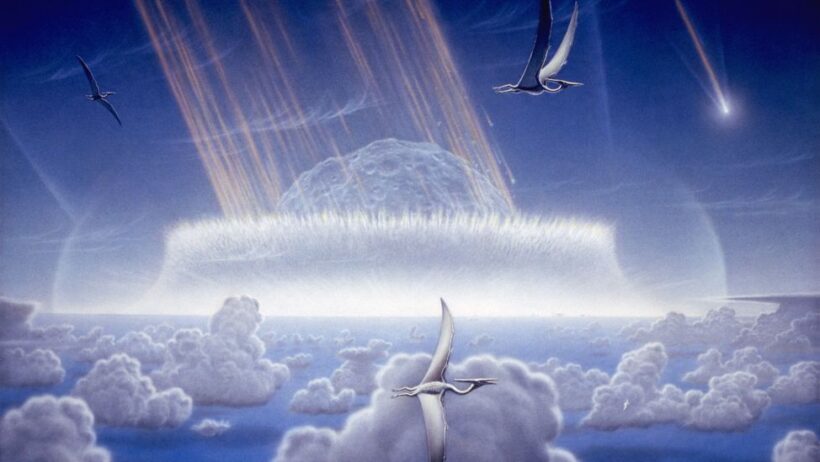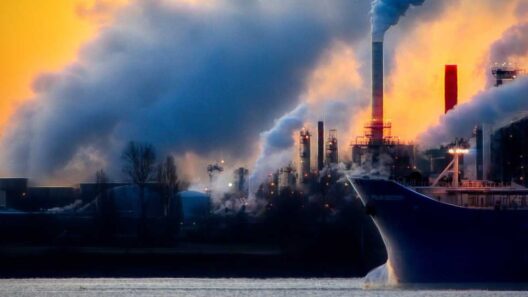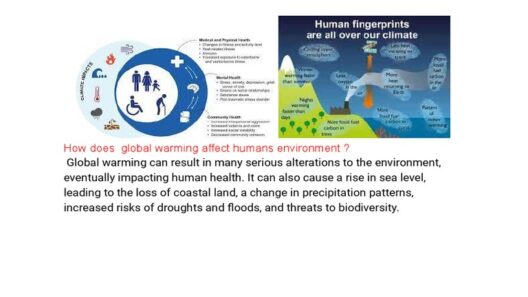Throughout the eons, Earth has been a stage for countless dramas, each epoch featuring its own cast of characters, conflicts, and narratives. One such catastrophic event, the demise of the dinosaurs, has perplexed scientists and enthusiasts alike. The narrative has been interwoven with various theories, many of which sensationally speculate about the impact of climate change, particularly global warming.
The question at hand—“Did Global Warming Kill Off the Dinosaurs?”—is a potent one, evocative of the wider issues surrounding our climate today. To fully appreciate the complexities, one must first rewind the cosmic clock to the Mesozoic Era, a time when dinosaurs reigned supreme, and Earth was a vastly different place. The planet’s climate during the late Cretaceous Period was significantly warmer than it is today, with lush, verdant landscapes and arid deserts interspersed across continents. Global temperatures hovered, on average, about 6 to 14 degrees Celsius higher than contemporary readings. However, rather than attributing this warmth solely to ancient atmospheric conditions, one cannot help but draw parallels to today’s anthropogenic influences on climate.
As we delve deeper, it’s vital to dissect the cataclysmic event that undeniably played a central role in the extinction narrative: the astronomical impact of an asteroid. Approximately 66 million years ago, a colossal asteroid collided with what is now the Yucatán Peninsula in Mexico, resulting in an explosion that reverberated throughout time. The immediate results were devastating—massive wildfires, tsunamis, and a “nuclear winter” effect that flung an abundance of dust and soot into the atmosphere, obscuring sunlight and drastically cooling the Earth. This chilling occurrence beckoned a cascade of ecologic collapse. Yet, to solely attribute the dinosaurs’ extinction to this single event is akin to positing that a single stroke of lightning initiates a forest fire.
While the asteroid impact is often foregrounded in discussions about dinosaur extinction, it becomes critical to consider additional factors that converged to create an insidious environment increasingly inhospitable for these magnificent creatures. Rising sea levels, as a result of climatic fluctuations, led to habitat loss. Ecosystems began to unspool like a finely woven tapestry; the strands of life intermingled, now frayed and scattered. Dinosaurs faced increasingly hostile conditions: changes in flora and diminished food resources stirred a ripple effect, undermining their survivability.
As the earth warmed and cooled in cycles, other contemporary factors, such as volcanic activity, may have further fueled the narrative of change. The Deccan Traps in present-day India released vast plumes of volcanic ash and gases, which could have contributed to altered climate patterns. This phenomenon presents an intriguing metaphor for today’s human-induced climate change—where an accumulation of detrimental practices can push a system toward irreversible tipping points.
From an ecological standpoint, the interplay of various factors illustrates a delicate balance. Consider an intricate web spun by a spider; if just one of its silken threads falters, the entire structure may collapse. Likewise, the simultaneous stressors—both from the skies and beneath the Earth’s surface—compounded against the backdrop of a naturally warming climate during the dinosaurs’ twilight led to an ecosystem that was precariously perched on the brink of chaos.
This brings us to the modern era, where the specter of climate change looms large. Today, our planet is akin to that ancient Earth, experiencing shifts propelled by human actions: fossil fuel combustion, deforestation, and industrial emissions—all contributing to a clustering of greenhouse gases in the atmosphere. Scientists warn that if global temperatures rise beyond the 1.5-degree Celsius threshold established in the Paris Agreement, we might observe ecological imbalances that rival those of the Cretaceous collapse.
Thus, while the formidable asteroid is often heralded as the agent of doom for the dinosaurs, it is essential to acknowledge that the interplay of multiple ecological elements catalyzed their extinction. Just as with our current climate predicament, it is the convergence of factors—from natural cycles to anthropogenic influences—that presents the critical fissure from which disaster can spring. Awareness and action become pivotal in this context.
Furthermore, the discussion surrounding the dinosaurs should invigorate a sense of urgency and accountability. The demise of these ancient creatures serves as a stark reminder of nature’s fragility. When life forms—no matter how mighty—find themselves trapped on a rapidly sinking ship, the outcome is seldom favorable. Can humanity learn from this ancient tragedy, or will we, too, be swallowed by the maelstrom of our creation?
Ultimately, the question of whether global warming killed off the dinosaurs encapsulates a profound and ongoing discourse on climate resilience and adaptation. It is imperative to recognize that the fabric of life on Earth is not only intricate but also fragile. The lessons gleaned from the past urge us to act with greater mindfulness and foresight. Thus, as we stand at the precipice of change, we must endeavor to bridge knowledge with action, ensuring that we do not become just another civilization laid to rest within the annals of time. Our story, unlike that of the dinosaurs, can have a different conclusion if we collectively embrace the weight of responsibility resting upon our shoulders.








